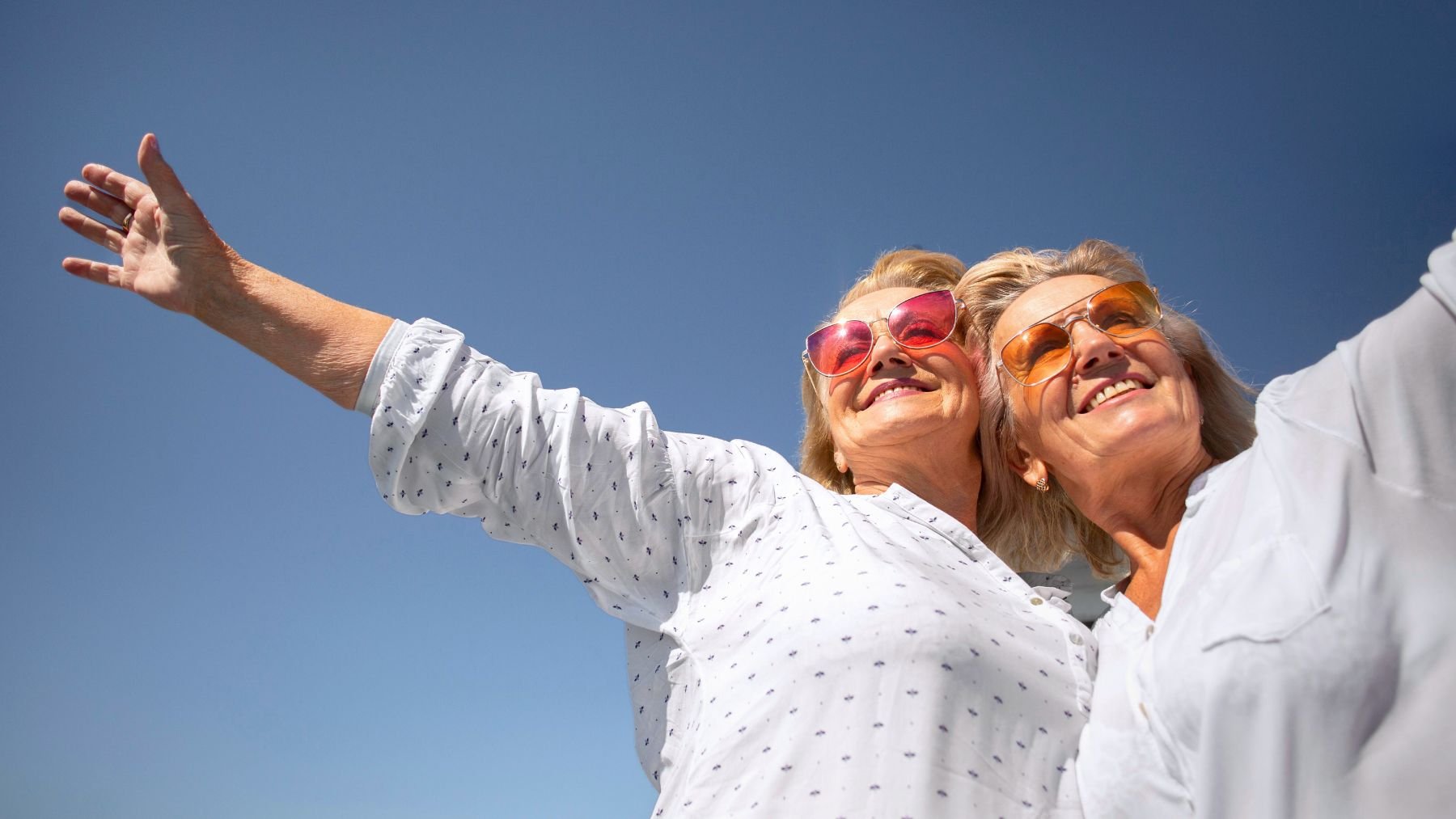A white shirt might not seem like much, but for adults over 70 heading out in the heat, it’s one of the smartest choices they can make. Lightweight, long-sleeved, and light-colored clothing—especially in breathable fabrics—can offer more heat protection than many realize. While sunglasses and hats are helpful, there’s more you can do to stay protected this summer.
Here, we’ll focus on how seniors can stay safe and comfortable outdoors in high temperatures. We’ll cover what type of clothing helps the most and walk through other key precautions like hydration, activity timing, and environmental adjustments that help prevent overheating.
Why seniors should wear white, light clothing this summer
As temperatures rise, seniors face risks of overheating. The body’s natural ability to regulate heat weakens with age, making it harder to stay cool. That’s where clothing becomes important, and light, white garments can make a major difference.
White reflects sunlight instead of absorbing it, which helps keep body temperature lower. Light fabrics like cotton or linen allow air to move freely across the skin, speeding up the cooling process and helping moisture evaporate faster.
Wearing loose, breathable clothing also reduces the chance of skin irritation and discomfort from trapped sweat. A white, long-sleeved shirt made from the right material offers double protection: it shades the skin from UV rays and prevents heat from building up. And because seniors often have thinner, more sensitive skin, that coverage helps prevent sunburns and rashes.
Other smart precautions for seniors during the heat
Clothing is only one part of staying safe in summer weather. Seniors need a full plan. Here’s what else to keep in mind:
- Hydration needs extra attention: Older adults don’t always feel thirsty, even when their bodies need water. Always carry a water bottle and make sure to sip throughout the day. Avoid drinks with caffeine or alcohol.
- Time your outings: Stay indoors during peak heat hours, usually 11 a.m. to 4 p.m. If errands or walks are needed, go early in the morning or after the sun starts to set.
- Use indoor cooling tools: Air conditioners and fans can make a big difference, especially during peak heat hours. A damp washcloth on the neck or wrists can also help bring body temperature down quickly. If your home isn’t air-conditioned, consider spending time in a public cooling center, library, or shopping mall.
- Eat light and avoid hot meals: Choose foods like salads, fresh fruit, yogurt, or cold sandwiches. These are easier to digest and help keep the body cool. Cooking can heat the home, and heavy meals add stress to the body when it’s already working hard to stay cool.
Even brief periods outside can strain an older adult’s body when the heat is extreme. That’s why it’s important to plan ahead and build a routine that limits risk, from the clothes they wear to how they hydrate and when they go outside. This will make outdoor time safer and more comfortable for seniors who want to stay active and independent through the season.
